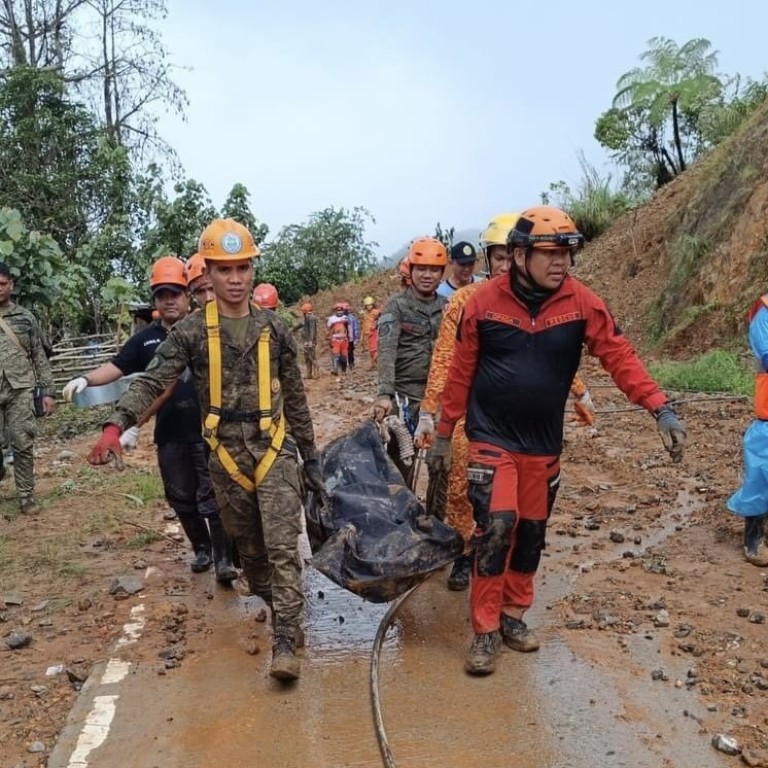
At least 10 die in Philippines, including children, when landslide buries house during prayers
- The landslide, which happened during Christian prayers in a remote mountain village in the south, came after days of heavy rain
- The rain flooded low-lying villages and displaced more than 36,000 people
A landslide set off by days of heavy rain buried a house where people were holding Christian prayers in the southern Philippines, killing at least 10 people, including five children, officials said Friday.
Two people were injured, and at least one more villager remained unaccounted for following the landslide in a remote mountain village in the gold-mining town of Monkayo in Davao de Oro province, said Ednar Dayanghirang, the regional chief of the government’s Office of Civil Defence.
Three more bodies were found on Friday, after the search was paused on Thursday afternoon due to the risk of another landslide.
“They were praying in the house when the landslide hit,” Dayanghirang said. “It’s sad but it’s the reality on the ground.”

People living near the village were ordered to evacuate due to fears of more land- and mudslides due to intermittent downpours, said Monkayo Mayor Manuel Zamora.
Days of heavy rains also flooded low-lying villages and displaced more than 36,000 people in Davao de Oro and three other provinces, the Office of Civil Defence said. The weather began to clear on Friday in some areas.
The rains were sparked by what local forecasters call a shear line, a point where warm and cold air meet. At least 20 storms and typhoons lash the Philippine archipelago each year, especially during the rainy season that starts in June.
In 2013, Typhoon Haiyan, one of the strongest to hit on record, left more than 7,300 people dead or missing, flattened entire villages, swept ships inland and displaced more than 5 million in the central Philippines.

